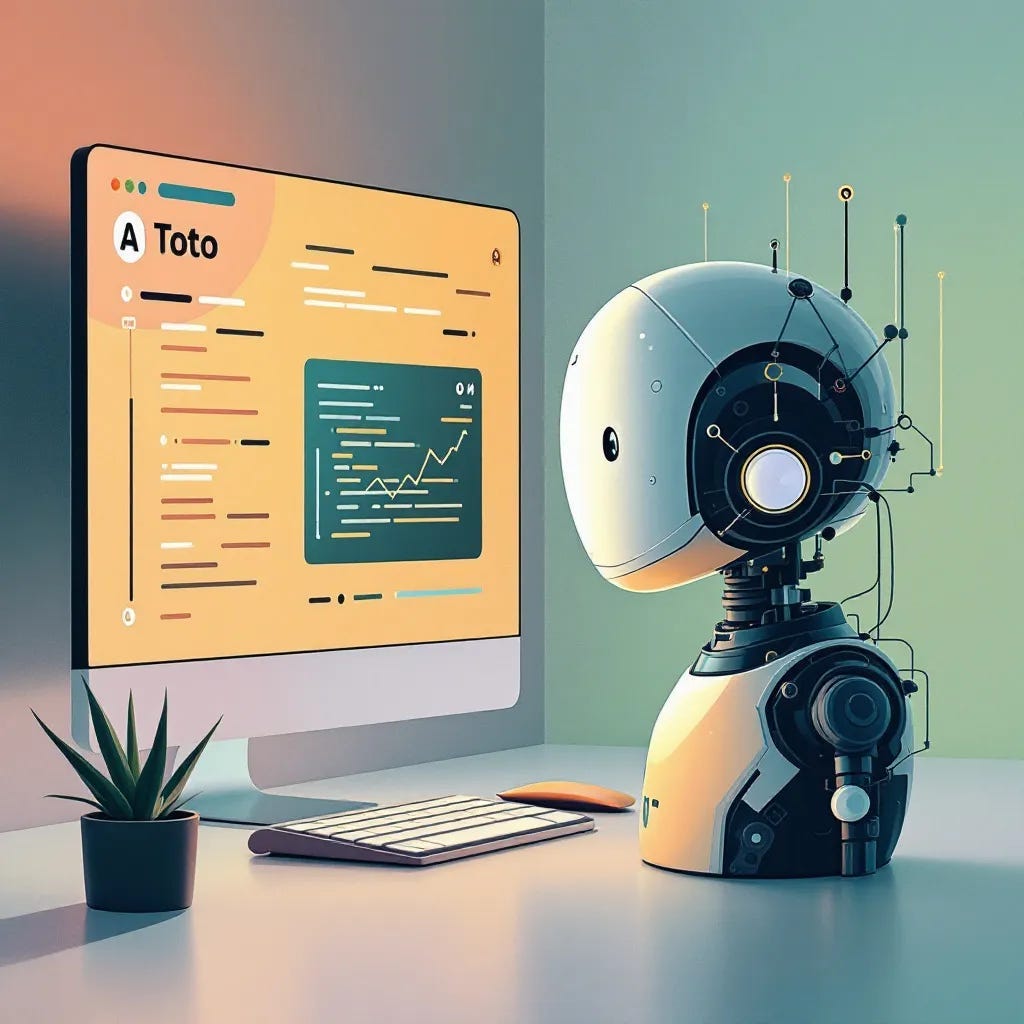Ever wished your AI assistant had its own web browser? Meet Playwright MCP – a new tool that lets AI control a browser using smart data instead of screenshots, making automation faster and more reliable.
Meet Playwright MCP – AI That Browses the Web for You
Playwright MCP is a newly released Model Context Protocol server that provides browser automation via Microsoft’s Playwright library . In plain English, it lets large language models (AI systems like ChatGPT) interact with web pages through structured data instead of visuals . Rather than relying on screenshots and computer vision, Playwright MCP uses Playwright’s accessibility tree – giving the AI a text-based snapshot of the page’s structure (like a behind-the-scenes outline of buttons, links, and text) . In short, it’s like giving your AI assistant its own web browser, where it “sees” a page’s content and can click or type just as a human would, but with speed and precision.
Jaroslav Urbanek is a reader-supported publication. To receive new posts and support my work, consider becoming a free or paid subscriber.
Subscribed
What is Playwright MCP?
Playwright MCP (short for Model Context Protocol) is essentially a small server that gives an AI model control over a web browser. It’s built on Playwright, a popular browser automation library, and was introduced by Microsoft’s Playwright team in early 2025 . The term might sound fancy, but it just means there’s a defined way (a protocol) for an AI “agent” to send commands to a browser and get back information.
Imagine an AI wants to click a button or read a webpage. Playwright MCP acts as the middleman: the AI asks MCP to do something, and MCP uses Playwright to perform that action in a real browser behind the scenes. The magic is that MCP returns structured results (not pictures) to the AI – for example, the text of the page or the fact that a button was clicked successfully. This design makes the interaction efficient and clear for the AI.
How Does It Work? (Snapshots vs. Screenshots)
Traditional browser automation with AI often meant taking a screenshot of a webpage and then using an AI vision model to interpret that image. That approach works, but it’s a bit like asking a person to describe a photograph of a webpage – it’s slow and prone to misreading. Playwright MCP takes a smarter route: it uses accessibility snapshots. These snapshots are basically the page’s DOM (structure and content) distilled into a text format that an AI can easily parse, similar to what screen readers use for accessibility.
Snapshot Mode (the default) gives the AI a structured outline of the page’s elements — for example, it might list a button labeled “Login”, a heading that says “Welcome”, a text input field for “Email”, and so on. The AI can then decide “click the Login button” or “type into the Email field” with certainty, because it has the exact element identifiers, not just pixels . This makes interactions fast and lightweight (no heavy image processing) and LLM-friendly (no need for any vision model at all) .
Vision Mode is an optional fallback where the AI is given a screenshot image of the page instead. Playwright MCP supports this too for cases where visual context is truly needed, but it’s generally not required for tasks like navigation or data entry . In essence, Snapshot Mode covers most needs with better performance and reliability, while Vision Mode is there just in case.
Why Does It Matter? (Benefits & Use Cases)
Speed and Reliability: Because Playwright MCP feeds the AI a clean structured view of the page, actions tend to be faster and less error-prone than interpreting images. There’s no guessing what text is in a blurry screenshot – the AI gets the exact text and element structure. This means automation tasks can run more quickly and consistently .
No Specialized Vision Needed: Another benefit is not having to build or use heavy-duty computer vision models for web automation. Everything is handled with web-standard accessibility info, so even non-AI experts can set it up. The complexity (and cost) of maintaining image recognition for each web change is gone .
Use Cases: Playwright MCP opens up a lot of possibilities. For example:
• Hands-free web navigation & form-filling: An AI agent can open websites, click through navigation menus, log in, and fill out forms just like a person would – useful for personal assistants or customer service bots.
• Data extraction (web scraping): Need to gather info from several pages? An AI can directly read page content and extract structured data, since it sees the DOM structure. This could help generate reports or analyze competitors’ sites.
• AI-driven testing: Quality Assurance (QA) teams can let an AI run through test scenarios on a web app (like “go to our site, sign up as a new user, and verify the welcome message”). The AI will navigate and validate the UI steps, which can accelerate testing and catch issues automatically .
• Intelligent assistants and agents: Any advanced assistant (think ChatGPT plugins or GitHub Copilot’s future agents) that needs to use a browser can do so through MCP. This means more powerful help desks, research assistants, or monitoring tools that actively interact with websites on behalf of users.
Ready to Try It?
The Playwright MCP project is open-source and available on GitHub for anyone who wants to experiment. If you’re a developer using Visual Studio Code, you can enable Playwright MCP in your IDE with a single command – after that, your AI assistant (for example, GitHub Copilot Chat) will have the power to open pages, click buttons, and run tests in the browser for you. It’s a seamless way to bring AI-driven actions into your daily workflow.
And if you’re curious, give Playwright MCP a try in VS Code to see how an AI can start surfing the web on your behalf – you might be surprised by what it can do!




